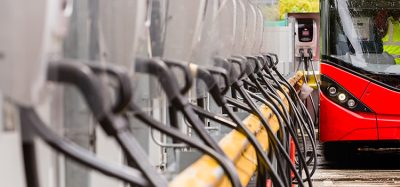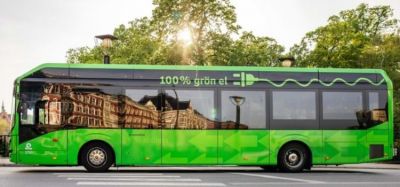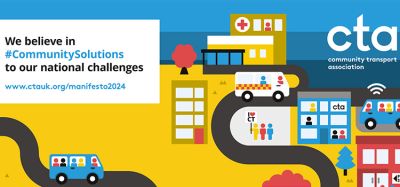Transport and logistics in the Estonian economy
- Like
- Digg
- Del
- Tumblr
- VKontakte
- Buffer
- Love This
- Odnoklassniki
- Meneame
- Blogger
- Amazon
- Yahoo Mail
- Gmail
- AOL
- Newsvine
- HackerNews
- Evernote
- MySpace
- Mail.ru
- Viadeo
- Line
- Comments
- Yummly
- SMS
- Viber
- Telegram
- Subscribe
- Skype
- Facebook Messenger
- Kakao
- LiveJournal
- Yammer
- Edgar
- Fintel
- Mix
- Instapaper
- Copy Link
Posted: 15 December 2010 | Juhan Parts, Minister of Economic Affairs & Communications, Estonia | No comments yet
Transport is a key factor for the economy as a whole. In Estonia, the transport industry and its support service activities account for nearly 8% of employment. The transport sector has a significant impact on economic growth, social development and the environment. The development of transport is a basic condition for ensuring sustainable development and meeting people’s need for mobility.
In 2009, nearly 193 million passengers travelled by Estonian transport enterprises, of whom 96% were carried in domestic traffic. Urban transport (i.e. buses, trams and trolley buses) was used by almost 150 million passengers. In 2009, transport enterprises carried 75 million tonnes of goods and 38 million tonnes of freight were loaded and unloaded in ports.
Transport is a key factor for the economy as a whole. In Estonia, the transport industry and its support service activities account for nearly 8% of employment. The transport sector has a significant impact on economic growth, social development and the environment. The development of transport is a basic condition for ensuring sustainable development and meeting people’s need for mobility. In 2009, nearly 193 million passengers travelled by Estonian transport enterprises, of whom 96% were carried in domestic traffic. Urban transport (i.e. buses, trams and trolley buses) was used by almost 150 million passengers. In 2009, transport enterprises carried 75 million tonnes of goods and 38 million tonnes of freight were loaded and unloaded in ports.
Transport is a key factor for the economy as a whole. In Estonia, the transport industry and its support service activities account for nearly 8% of employment. The transport sector has a significant impact on economic growth, social development and the environment. The development of transport is a basic condition for ensuring sustainable development and meeting people’s need for mobility.
In 2009, nearly 193 million passengers travelled by Estonian transport enterprises, of whom 96% were carried in domestic traffic. Urban transport (i.e. buses, trams and trolley buses) was used by almost 150 million passengers. In 2009, transport enterprises carried 75 million tonnes of goods and 38 million tonnes of freight were loaded and unloaded in ports.
The general objective of the Government regarding transport is to ensure all people and enterprises have access to the sites necessary for their day-to-day activities. Thus, an effective transport system is an important prerequisite for economic growth and social development.
The described measures in this article are only part of the complex task of the governmental transport vision:
» Effective system of planning, implementing and monitoring the transport policy
» High quality state infrastructure;
» Diminished adverse environmental impact of the transport sector;
» Safe and secure transport sector;
» Convenient and popular public and light transport;
» Well-functioning transport market and internationally competitive Estonian transport companies.
The global economical environment for the transport and logistics sector has changed rapidly and influences the transport sector performance significantly. It is obvious that there is no competitive economy without a well-developed transport system. A globally functioning transport market based on international agreements is the key factor for growth and nowadays there is no place for the protectionism.
The key to success in the transport sector is fair competition from a free market economy, which makes us constantly look for new opportunities. Less bureaucratic barriers, open market for transport services, smart and innovative ICT solutions for the logistic sector and better cooperation are key questions today. And it is here we see the need for the stronger cooperation on an European level. The future challenge for us is to increase the efficiency of existing transport infrastructure use and to reduce dispensable mobility of citizens through the implementation of modern ICT solutions. In this field Estonia has achieved quite good results, for example internet cross-use of different public registers, digitally signed tax declarations for E-Tax Board, parking tickets sold over SMS services and mobile phones used to pay for goods etc.
Nowadays, road border crossing questions with our eastern neighbours are very relevant for us. Road transport between the EU and Russian Federation via Estonia is expected to continue growing. The Estonian Government has a clear vision that the main border crossing points between EU and Russia on the territory of Republic of Estonia will be provided with secured parking and rest areas, allowing lorries to wait in an organised manner. Estonia has developed internet and mobile connections based on-line and in real-time situations and a flexible international road border crossing pre-ordering system. After the test period we plan to start with system implementation in our road border crossing points in 2011.
Estonia continuously invests in the railway network along the North-South route named RailBaltica. The Estonian government is very keen to start a new rail passenger service from Tallinn to Warsaw. The vision of the RailBaltica project is to provide a modern, reasonably priced and comfortable method of travel between the main Baltic cities and Poland. To fulfil these ambitions new multiple train units with automatic gauge changing equipment will be required. In order to enhance the competitiveness of rail transport in comparison to road transport, and to improve domestic rail passenger service quality, Estonia has decided to purchase new rolling stock. We plan to purchase 18 sets of new electric multiple units with Cohesion Fund co-financing and up to 18 sets of new diesel multiple units financed only by the state. Estimated total cost of the project is €170 million and the new rolling stock will arrive between 2013-2014.
Related topics
Air Quality, Transport Governance & Policy
Issue
Issue 6 2010








